SAEDNEWS: Ardashir Babakan Palace, a masterpiece of Sassanid architecture, reveals the grandeur and sophistication of ancient Persia, where history and legend intertwine.

Firoozabad County, which in ancient times was called the city of “Gor,” was surrounded by massive walls and located in a depression. Therefore, when Alexander the Great attacked this city, due to the impossibility of breaching the massive city walls, he diverted the nearby river, and since the city was situated in a depression, it turned into a lake.
This lake remained in this state for centuries until Ardashir Sassanid took action to drain it. After that, the city of Gor became known as “Ardashir Khoreh.” Unfortunately, as a result of the Arab invasion, this city was also destroyed, but the city’s ruler gained control over the Arabs and undertook the reconstruction of the city. From that point on, the city’s name changed to Firoozabad.
Ardashir Babakan Palace was built in the 3rd century AD (in 224 AD) by Ardashir Babakan, one of the founders of the Sassanid dynasty. The Sassanid palace of Ardashir is located in Firoozabad County in Fars Province and dates back more than 1,800 years.
Some experts believe that Ardashir Babakan Palace did not originally serve as a palace and was essentially a fire temple. The reason for this belief is the palace’s location next to water. Our ancestors believed that any structure built near water was essentially a place for worshiping Anahita, the goddess of water. For this reason, one of the main reasons for naming this palace the Fire Temple of Firoozabad is its placement next to the “Qamp Fire Temple” spring.
One of Iran’s most famous archaeologists, the late Professor Pirnia, believed that calling this historic building a palace was a mistake because it lacks the characteristics and features of a palace. For this reason, Professor Pirnia introduced Ardashir Babakan Palace as the largest fire temple in Fars Province. However, some other archaeologists believe that Ardashir Babakan did sit on the throne in this palace and had an official residence there.
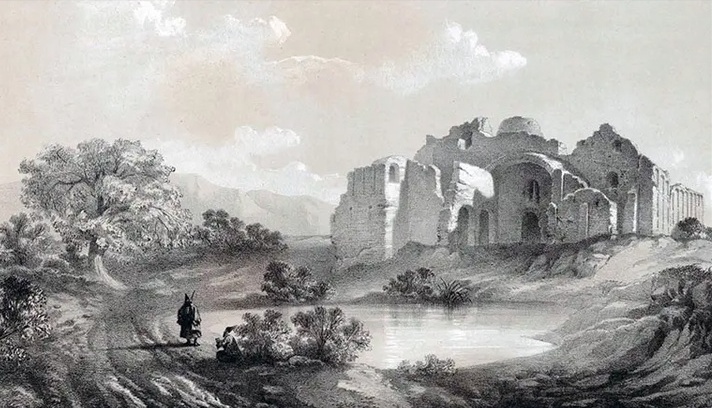

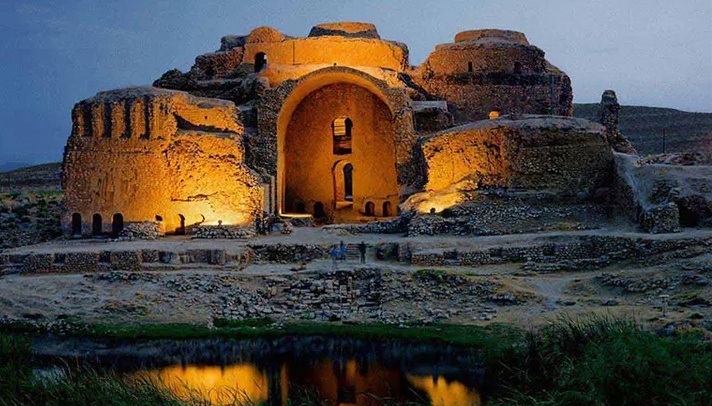
Ardshir Babakan Palace consists of three main parts, including a courtyard, two iwans, and three adjacent halls. This palace has a floor area measuring 104 meters by 55 meters, and its construction employed the most important materials of the Sassanian era, namely tile, plaster, and semi-carved stones. The use of these materials has made the interior architecture of the palace visually striking and beautiful.
The presence of an iwan and a dome made the Sassanian Ardshir Palace the first building with these features in history 1,800 years ago. The construction method and structural strength are such that the building still stands after 1,800 years, and despite the damage incurred over time, it still retains its tall and beautiful dome and its iwans.
In the eastern part of the palace, you can see four domed structures built using elephant-ear (filpoush) corners, with circular ceilings that are open at the center of the dome with a diameter of one meter. Filpoush, or corner-eave, is one of the main methods for creating corners in large ancient buildings. Elephant-ear is essentially a technique for constructing domes or arches on the main walls of tall buildings, in which the square section of the walls is transformed into a rounded section.
A river passes beside the eastern wall of Ardshir Babakan Palace, which has been the main factor in developing this area. The presence of water alongside the other four main natural elements has made this region strategic and important. In the northern part of the Sassanian Ardshir Palace complex, you can see a beautiful spring surrounded by lush greenery.
Unfortunately, in Azar 1399 (December 2020), due to flooding in this area, the palace was exposed to inundation, and parts of the main walls were destroyed as a result of the flood.
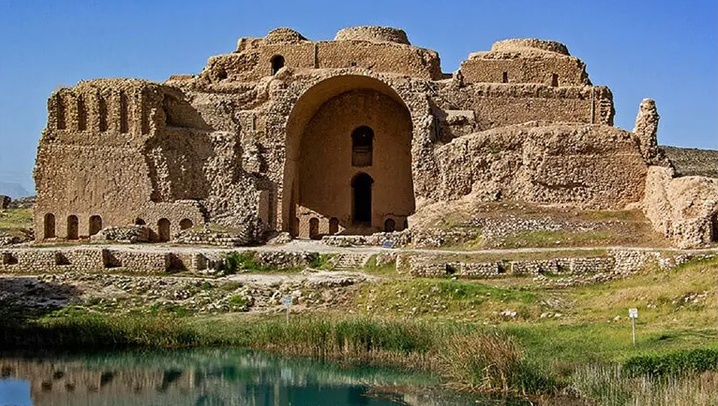
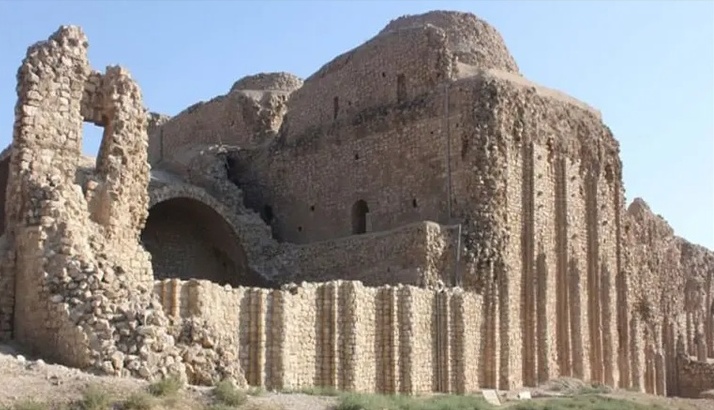
The halls of Ardshir Babakan Palace have an interlocking structure, forming several halls within one another. All halls of the Sassanian Ardshir Palace are connected, and this internal architectural style is essentially the main difference between Ardshir Babakan Palace and other Sassanian-era buildings.
One of the reasons that has ensured the durability and longevity of this building for more than 1,800 years is the use of “nail stones” for constructing the halls, the palace’s base, corridors, and iwans. Inside the halls, there are delicate artistic decorations, which are a type of plasterwork specific to the Sassanian period. On the outer wall of the palace, you can see a stone relief depicting the coronation ceremony of Ardshir Sassanian.
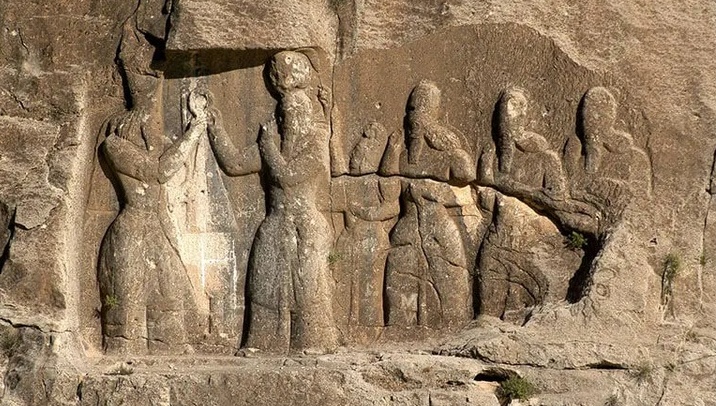
Ardeshir Babakan Palace has a large courtyard located in the central part of the building and features two relatively large iwans. This style of courtyard, halls, and surrounding iwans is also indicative of the style and manner of constructing large buildings during the Sassanian period. Considering that in later periods we see examples of this type of courtyard in historical buildings, it can be concluded that Sassanian architects were, in a way, the innovators of this style of interior architecture.
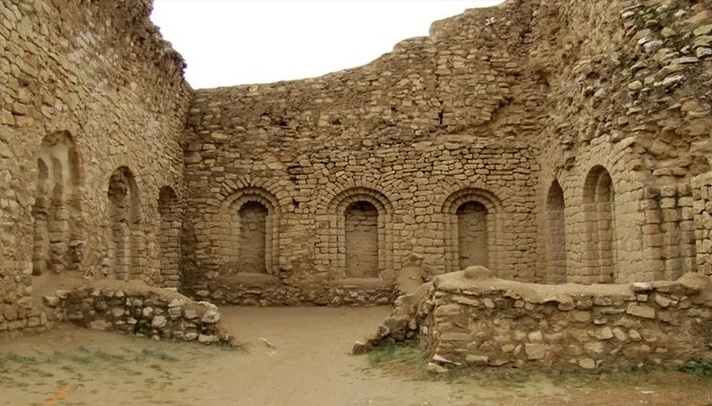
Ardeshir Babakan Palace is one of the earliest examples of historical Sassanian buildings featuring both an iwan and a dome. Therefore, the iwan is considered one of the most important parts of the Sassanian Ardeshir Palace. In the palace, you can see one tall iwan, two large arched iwans, and several smaller iwans.
Sassanian architects used the Gilou’i construction method for the upper parts of the smaller iwans of the palace. Gilou is essentially the section between the arch of the building and the wall, on which plasterwork and painting were applied, functioning like the throat of the ceiling and arch of the building. A similar style of iwan construction can also be seen in the Persepolis building.
The domed iwans that remain from the Sassanian Ardeshir Palace are a vivid example of the artistry and capability of Sassanian architects. The rigid style of the iwans was so significant that even in later periods it was used in constructing various buildings.

Considering that dome construction was not widespread during the Sassanian period, Ardeshir Babakan Palace can be regarded as the first Sassanian building to incorporate domes in its architecture. The Sassanian Ardeshir Palace has four domes, whose installation utilized the corner construction or Elephant Ear (Filpoosh) architectural style mentioned at the beginning of the article.

Ardeshir Babakan Palace has interconnected halls, and on its walls, you can see remaining traces of plasterwork specific to the Sassanian period. Sassanian architects, to cover the bricks used in the palace’s construction, adorned the entire interior of the halls, iwans, and exterior parts of the building with beautiful plasterwork. Today, traces of the Sassanian masters’ plasterwork can only be seen in small parts inside the building.
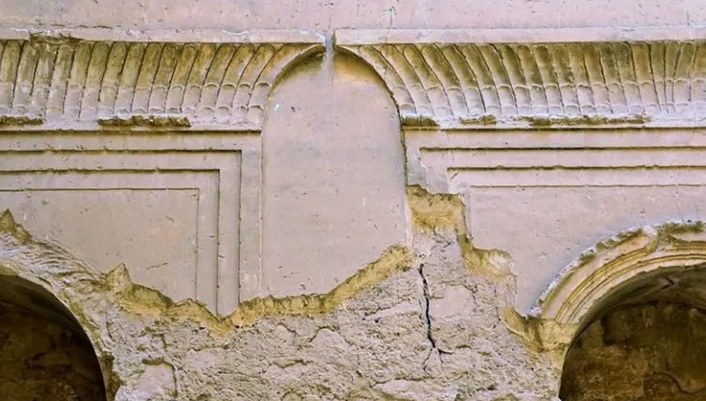
You can clearly see examples of square columns and columns made of Mikhaki stone in Ardeshir Babakan Palace. These columns closely resemble columns from Parthian-period buildings, with the difference that their surroundings are adorned with beautiful plaster decorations.

Due to the relatively warm and dry climate of Fars Province, the best time to visit the Palace of Ardashir Babakan is during the spring season. The palace is located in an open area in the heart of the plain, and therefore visiting it in the summer is not recommended due to the heat.
In the autumn season, when the weather is mild and a cool breeze blows, you can also plan to visit the Sasanian Palace of Ardashir and the Firuzabad Fire Temple. However, due to the cold weather in winter, visiting this palace may be difficult for many tourists. Therefore, it can be concluded that spring until mid-May and autumn are the best times to visit the Palace of Ardashir Babakan.
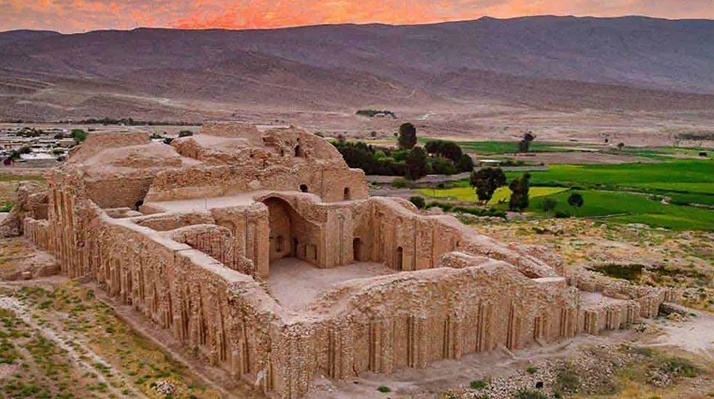
The Palace of Ardashir Babakan is located 3 kilometers from Firuzabad County, which is part of Fars Province. Although in the past visiting it was free, it is said that from the year 1403 (Iranian calendar) a fee must be paid to visit the palace. Due to insufficient lighting in this area, the best visiting hours are from 8 a.m. until just before sunset.
To reach the palace, you can use the Shiraz-Jahrom road. Continue along the road southeast until you reach the Firuzabad Forest Park. By passing through the forest park, you can see the sign for the Palace of Ardashir Babakan or the Firuzabad Fire Temple.
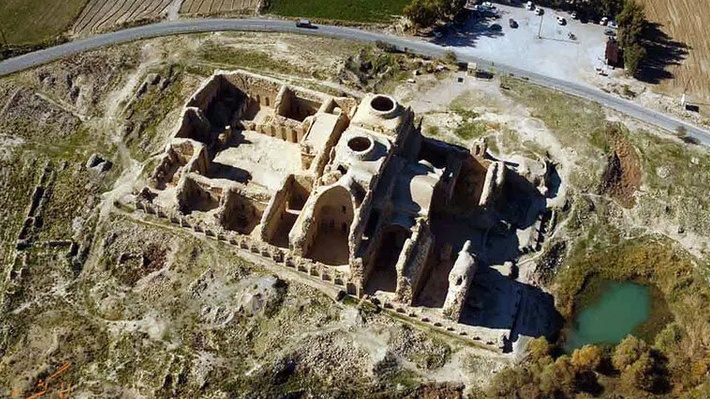
Fars Province, Firuzabad County, 3 kilometers north of Firuzabad, Palace of Ardashir Babakan

